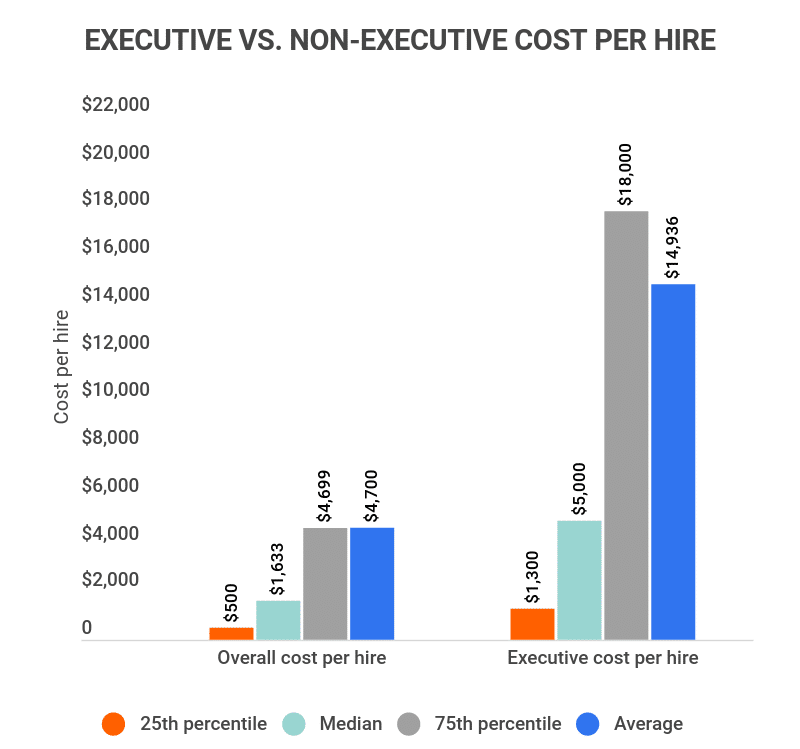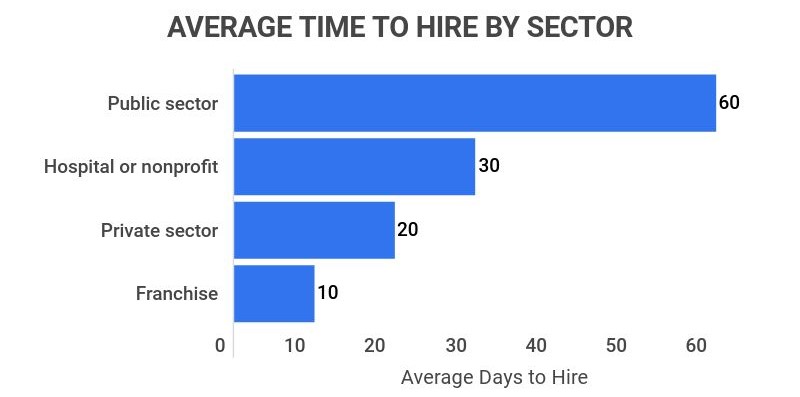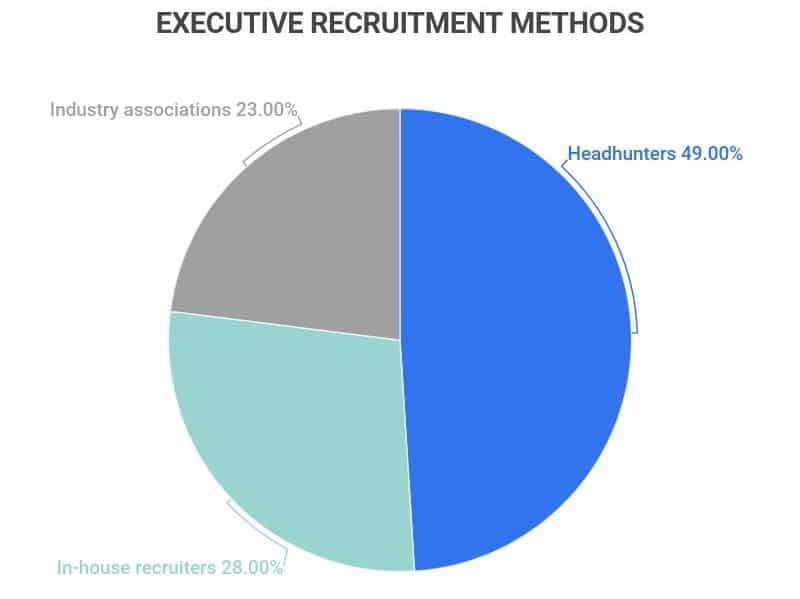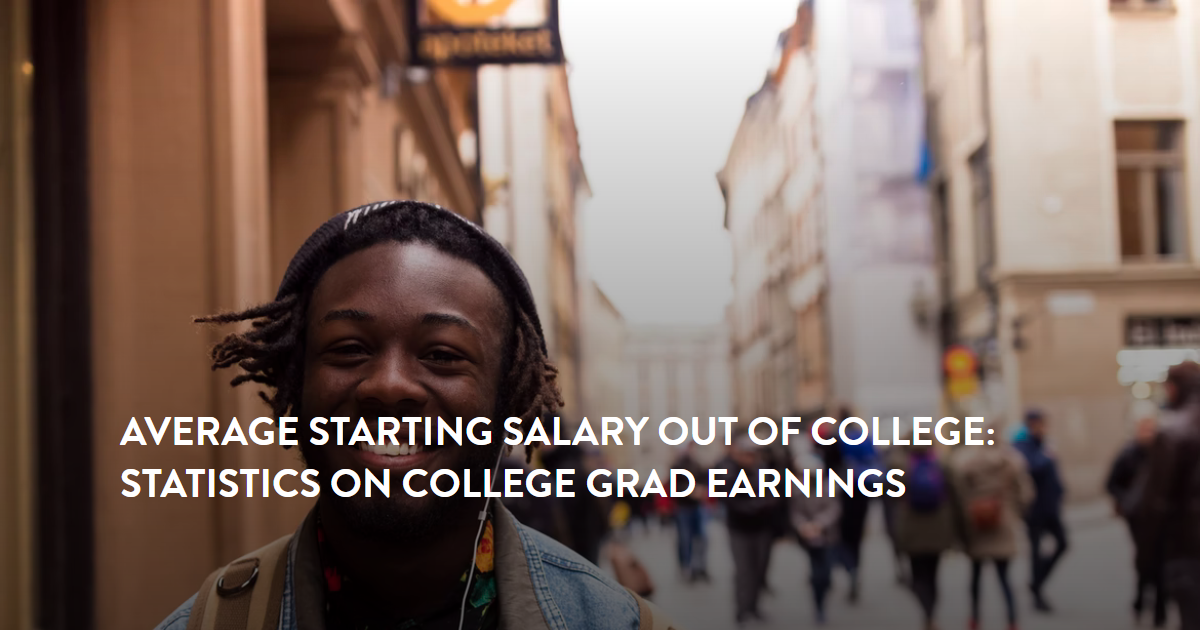- HR Statistics
- Average Labor Cost Percent Of Sales
- Average Time to Reach Profitability At A Startup
- Office Space Per Employee
- Recruitment Statistics
- Employee Engagement Statistics
- Work-Life Balance Statistics
- BYOD Statistics
- Paternity Leave Statistics
- Onboarding Statistics
- Average Paid Maternity Leave In Us
- Average Cost Of A Bad Hire
- Employee Theft Statistics
- Paid Family Leave Statistics
- Cost Of Hiring Statistics
- Employee Turnover Statistics
- Average Cost Of Employer Sponsored Health Insurance Statistics
- Sexual Harassment In The Workplace Statistics
- HR Statistics
- PTO Statistics
- Social Media Recruitment Statistics
- Hiring Statistics
- Out Of Prison Employment Statistics
Research Summary. Hiring new employees with the appropriate experiences and qualifications is essential to the continued success and profitability of nearly every U.S. company. However, the average cost to hire an employee can be a huge factor when going through the process. After extensive research, our data analysis team concluded:
-
The average cost per hire is $4,700.
-
It takes 36 to 42 days to fill the average position in the United States.
-
15% of Human Resources expenses are allocated towards recruitment efforts.
-
It costs up to 40% of an employee’s base salary to hire a new employee with benefits.
-
63% of hiring managers and talent acquisition specialists report that AI has positively changed how recruiting is handled at their company.
-
It takes, on average, three to eight months for a new hire to become fully productive at work.
For further analysis, we broke down the data in the following ways:
Demographics | Recruitment | Trends | New Hires

General Cost of Hiring Statistics
-
In the United States, the median cost per hire is $1,633.
The median cost per hire is $2,792 less than the average cost per hire, which currently sits at $4,700. What this means is that some jobs cost a lot more to fill than a typical job, which skews the average cost of a new hire significantly.
To put it in perspective, 75% of hires cost less than $4,669. In comparison, the average cost to hire an executive is $14,936 and the median cost is $5,000. These relatively small segments of employees eat up a disproportionate amount of recruiting and hiring expenses.
-
A vacancy in a company costs, on average, about $98 per day.
The average vacancy costs employers a staggering $4,129 over 42 days, the time it typically takes to fill an open position. This breaks down to just over $98 per day, plus the additional funds allocated towards recruitment.
-
On average, benefits cost employers 25% to 40% of a new employee’s base salary.
Salary and benefits packages are valued at 1.25 to 1.4 times a new employee’s base salary. Therefore, for an employee earning $50,000 annually, their benefits could cost a company anywhere from an additional $12,500 to $20,000 annually.
-
At small companies across the nation, the average cost of training is $1,105 per employee per year.
Small businesses, or companies with 100 to 999 employees, spend more than $1,000 per employee on training each year, $658 more than large companies.
For comparison, large companies with 10,000 employees or more spent about $447 per employee each year and midsize companies, with 1,000 to 9,999 employees, spent about $545.
Average Training Cost Per Employee
Business Size Average Training Cost Per Employee Small (100-999 employees) $1,105 Midsize (1,000 to 9,999 employees) $544 Large (10,000+ employees) $477 All Companies $702 All training costs were calculated by taking both structured training costs and the time managers and employees spend training new hires into account.
-
It can take up to six months for a company to make up the money it spent on a new hire.
After investing in hiring a new, mid-level employee, HBS data suggests that it takes up to half a year to break even on their investment. The survey also concluded that new hires typically don’t reach their full productivity level until being on the job for more than 12 consecutive weeks.
Average and Median Cost Per Hire for Executive and Non-Executive Positions
| 25th Percentile | Median | 75th Percentile | Average | |
|---|---|---|---|---|
| Non-executive cost per hire | $500 | $1,633 | $4,669 | $4,700 |
| Executive cost per hire | $1,300 | $5,000 | $18,000 | $14,936 |
Cost Per Hire Demographic Statistics
-
The cost of hiring and onboarding an entry-level employee is an estimated 180% less than the cost of hiring an executive-level employee.
Hiring an entry-level employee is estimated to cost about 20% of that employee’s salary. Meanwhile, hiring a mid-level employee typically runs up an average cost of $60,000, or 1 to 1.5 times the employee’s salary.
Hiring costs are the highest for executive-level employees. Data shows that it typically costs companies across the U.S. more than 200% of the new executive-level employee’s salary to complete the hiring and onboarding process.
-
Depending on the industry, it can take between 10 and 60 days to hire a new employee.
It typically takes approximately 60 days to hire a public sector employee, 30 days to hire a hospital or nonprofit employee, 20 days to hire a private sector employee, and 10 days to hire a franchise employee.

Hiring times also vary by state, city, and location. Average hiring times were 34.4 days in Washington, D.C., 25.3 days in Portland, Oregon, 23.7 days in San Francisco, California, 19.6 days in Austin, Texas, and 18.6 days in Miami, Florida.
-
Internal HR teams significantly increase a company’s cost per hire.
According to research, internal human resources teams can increase a firm’s hiring costs by 50% or more. An internal HR recruiter earning an annual salary of $51,000 increases hiring costs by at least $4,250 each month.
-
The majority of companies use reference checks to screen hourly, entry-level, middle management, executive candidates during the recruitment and selection processes.
Across the country, companies check references 74% of the time when screening executive level and middle management candidates, 69% of the time when screening non-management candidates, and 65% of the time when screening non-management hourly or non-exempt candidates.
Other popular screening methods include one-on-one interviews, phone screenings, behavioral interviews, in-person screenings, group interviews, and behavioral interviews, which are used by hiring managers and recruiters 68% to 54% of the time when assessing an applicant.
Recruitment Statistics
-
Executive search firms, in-house executive recruiters, and industry associations are the top three tools used to source executive candidates.
When recruiting employees for executive positions, data shows that 49% of surveyed firms use headhunters or executive search firms to find new talent, 28% use in-house executive recruiters to find new talent, and 23% of surveyed firms use industry associations to find new talent.
-
73% of companies in the United States use talent acquisition software.
The vast majority of U.S. businesses rely on talent acquisition software when recruiting new employees. Such software works to streamline the recruitment and hiring process, reduce the time and cost spent on hiring new employees, and enhance the onboarding experience.
-
Company websites, employee referrals, and free job boards are some of the most popular methods for employee recruitment in the U.S.
85% of surveyed companies recruit new employees through their company website, 90% of surveyed companies recruit new employees through referrals from current employees, and 71% of surveyed companies recruit new employees via free job boards.
Top Recruitment Methods in the U.S.
Recruitment Method Percentage of Companies That Use That Method Current Employee Referrals 90% Company Website 85% Free Job Boards 71% -
At most businesses across the United States, staff recruitment is the responsibility of an HR generalist.
Approximately 48% of HR generalists are responsible for recruiting for nonexecutive job openings, and 32% are responsible for recruiting for executive job openings.
Aside from HR generalists, new staff recruitment for non-executive roles is put in the hands of in-house recruiters 25% of the time, hiring managers 16% of the time, and third-party recruiters and staffing agencies 3% of the time.

Recruitment Trends and Predictions
-
The use of artificial intelligence as a recruitment tool is gaining popularity across the U.S.
According to recent research, 96% of hiring managers think that using AI, or artificial intelligence, can improve the recruitment and hiring process.
As the use of AI in HR departments across the nation continues to grow, it is primarily being used to improve talent acquisition and retention by enhancing sourcing, screening, hiring, onboarding, and more.
-
Human resources outsourcing is expected to grow at an annual rate of 4.9% over the next several years.
The HR outsourcing industry is expected to reach a market value of $45.8 billion by 2027, up by $13 billion from the 2020 market value of $32.8 billion. The increase in revenue represents a growth rate of nearly 5%.
-
Finding the right candidate in high-demand talent pools is one of the biggest challenges in recruiting today’s job candidates.
46% of hiring managers state that one of the biggest recruitment challenges is sourcing qualified candidates from high-demand talent pools. Other top challenges in today’s recruiting process include obstacles related to compensation and competition.
-
The majority of recruiters and hiring managers in the U.S. rely on software during the recruitment process.
The use of recruitment software is becoming more and more popular. Today, 51% of hiring managers use interview scheduling software to help streamline the recruitment process, and 26% are thinking about starting.
New Hire Statistics
-
Average productivity rates for new employees hover around 25% during the first 30 days of employment.
Data suggests that new hires have a 25% productivity rate in their first month on the job after completing new employee training. That number then increases to 50% in their second month of work and 75% in their third month on the job.
-
It takes three to eight months for an employee to become fully productive.
Across almost all professional industries, hiring experts estimate that it can take almost a year for a new hire to reach full productivity at work.
-
A bad hire could cost a company up to 300% of the employee’s salary.
According to the Harvard Business Review data, employee turnover costs range between 100% and 300% of the replaced employee’s salary. With about 23% of new hires turning over before their first year on the job, hiring the wrong person can quickly become costly.
-
Companies can lose $15,000 or more on hiring an employee who leaves after one year or less.
According to a report by Employee Benefits News, organizations that hire a full-time salary employee earning $45,000 annually lose about $15,000 when that employee leaves the company after one year or less. The cost is even higher for employees making more money, equalling at least 33% of their annual salary.
Average Cost Per Hire FAQ
-
Cost per hire is the average amount of money a business spends on hiring a new employee. Cost per hire includes all HR and recruiting costs, including advertising, software, employee’s salaries, and more, involved in the onboarding process.
Cost per hire metrics are especially important as they allow companies to budget their recruiting expenses, evaluate their hiring process, and optimize their recruiting strategies.
-
How do you calculate cost per hire?
To calculate cost per hire, divide the total number of hires over a given period by the total recruitment cost over that same period. In other words:
Cost Per Hire = Total Recruitment Cost / Total Number of HiresYour total recruitment cost should take into account both internal recruiting costs and external recruiting costs.
-
What’s included in internal recruiting costs?
There are at least 6 factors included in internal recruiting costs. These include:
-
Candidate assessment costs
-
Employer branding
-
Internal recruiter salaries
-
Hiring managers’ salaries (or a portion thereof)
-
Travel expenses due to recruitment
-
Employee referral bonuses
Internal recruiting costs are typically the most expensive.
-
-
What’s included in external recruiting costs?
There are also at least 6 factors included in external recruiting costs. These include:
-
Job advertisement fees
-
External recruiter fees
-
Recruiting agency fees
-
Staffing agency/firm fees
-
Recruitment software
-
Recruiting event costs
-
-
What’s a good benchmark for cost per hire?
A good benchmark for cost per hire is between $3,000 and $5,000. However, it can be much lower depending on the size of your business and the nature of your business.
In the United States, the average cost per hire is $4,700. Many factors contribute to a company’s cost per hire, including industry, company size, and the level of the role being filled. As such, a good benchmark for cost per hire can range anywhere from $3,000 to $5,000, according to the Society of Human Resource Management.
-
What is a good cost per applicant?
A good cost per applicant is about $12. That’s the average cost to attract a job seeker and get them to apply for a job. Although this number jumped to almost $20 per applicant over the pandemic, it’s beginning to return to normal levels.
-
What’s included in a recruiting budget?
There are 8 important elements included in a recruiting budget. These are those elements:
-
Job board/advertisement fees
-
Applicant tracking system sofware fees
-
Recruiter fees
-
Internal HR expenses
-
Expenses for branding, promotion, social media, etc.
-
Pre-employment screening and/or testing
-
Referral bonuses
-
Travel reimbursements
-
-
How much does it cost to advertise a job?
It costs between $0.10 and $5.00 per click to advertise a job, in most cases. Most job posting sites operate on a pay-per-click model, which means that you only pay them when a candidate is actually interested enough to click the job advertisement.
There are other models that include setting a maximum spend (once a certain amount of people click it, the posting will stop being advertised) so that you can manage your spending.
Some job postings will cost much more than this, especially for highly skilled jobs. Some sites will also handle more recruiting steps and send you much more qualified candidates but charge a higher rate for the service.
-
Yes, knowing your cost per hire is important. However, it is far more important to invest in top talent than to get the most hires for the least amount of money.
Just as you track your average cost per hire using the methods above, also establish metrics to measure the performance of those new hires. Understand that it’s going to cost more to fill your senior-level roles than your entry-level ones, and recognize the importance of promoting talented individuals that are already part of your team.
Conclusion
Effective onboarding and hiring processes are integral to businesses’ continued success and longevity in virtually every industry across the United States. With the nation’s average cost per hire hovering around $4,700, understanding hiring statistics is an important factor in reducing recruitment costs and increasing revenue and profitability.
Across the U.S., it takes between 36 and 42 days to make a new hire, so it’s no surprise that the vast majority of companies allocate roughly 15% of all HR expenses towards recruitment efforts. Although such efforts can be costly, sometimes adding up to more than 40% of an employee’s base salary, finding and hiring good employees is key.
With the increased use of artificial intelligence to enhance the hiring process, the future of recruitment looks bright. As a result, the likelihood of reducing HR costs and quickly finding qualified candidates is increasing substantially.
References
-
SHRM. “SHRM Customized Talent Acquisition Benchmarking Report.” Accessed on August 19, 2021.
-
SHRM. “The Real Costs of Recruitment.” Accessed on September 6, 2022.
-
Johnson Service Group. “Are You Aware Of The Cost Of Vacancies?” Accessed on August 19, 2021.
-
Investopedia. “The Cost Of Hiring A New Employee.” Accessed on August 19, 2021.
-
Harvard Business Review. “Technology Can Save Onboarding From Itself.” Accessed on August 20, 2021.
-
Forbes. “The Cost Of Turnover Can Kill Your Business And Make Things Less Fun.” Accessed on August 20, 2021.
-
PR Newswire. “Global Human Resource Outsourcing (HRO) Industry.” Accessed on August 20, 2021.
-
Ideal. “The Rise Of AI In Talent Acquisition.” Accessed on August 20, 2021.
-
Yello. “Real Recruiters Share How HR Tech Has Helped Them Win The War On Talent.” Accessed on August 20, 2021.
-
The Hire Talent. “Hiring Costs At Every Level.” Accessed on August 21, 2021.
-
SHRM. “Average U.S. Hiring Time Increased By 10 Days Since 2010.” Accessed on August 21, 2021.
-
Business Wire. “It Can Take Eight Months Before New Starters Become Productive at Work.” Accessed on February 16, 2023.
- HR Statistics
- Average Labor Cost Percent Of Sales
- Average Time to Reach Profitability At A Startup
- Office Space Per Employee
- Recruitment Statistics
- Employee Engagement Statistics
- Work-Life Balance Statistics
- BYOD Statistics
- Paternity Leave Statistics
- Onboarding Statistics
- Average Paid Maternity Leave In Us
- Average Cost Of A Bad Hire
- Employee Theft Statistics
- Paid Family Leave Statistics
- Cost Of Hiring Statistics
- Employee Turnover Statistics
- Average Cost Of Employer Sponsored Health Insurance Statistics
- Sexual Harassment In The Workplace Statistics
- HR Statistics
- PTO Statistics
- Social Media Recruitment Statistics
- Hiring Statistics
- Out Of Prison Employment Statistics






